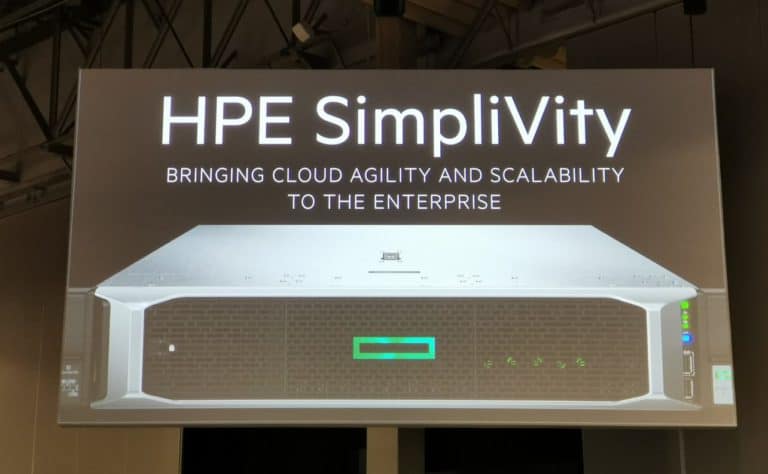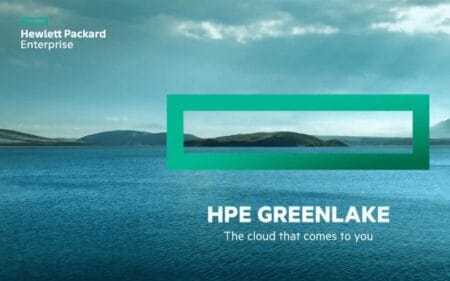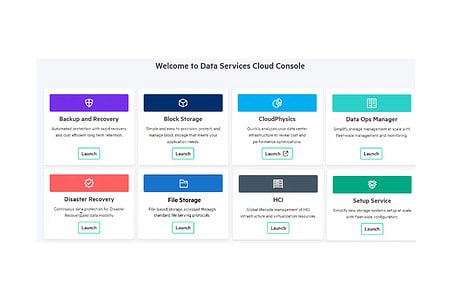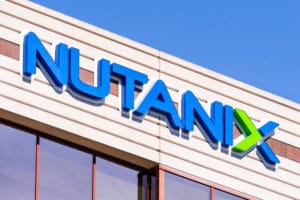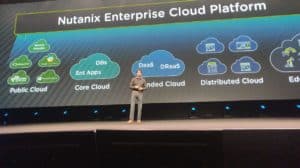Hyper-converged infrastructure (HCI) is a solution that more and more companies are choosing. There are several platforms that offer advantages, but everyone opts for a different strategy. We decided to speak with HPE to see how that company does it, with their HCI solution HPE SimpliVity. The strength of HPE SimpliVity seems to be located mainly in the underlying data platform.
The idea behind HPE SimpliVity stems from the idea of HCI. In a data centre, you have various components. Not only are there servers with compute, there also are servers for storage and networking. If you combine all this into one control panel, with nodes which can easily be connected, you get an HCI like HPE SimpliVity. However, HPE SimpliVity takes it a few steps further.
The company has also added backup and synchronization solutions, a WAN accelerator that allows you to optimize the connection between two offices with HPE SimpliVity nodes. Also, deduplication and compression are added.
HPE Data Platform
HPE SimpliVity is all about the data platform and the latter two features, deduplication and compression. By using deduplication, only unique data is stored. Data that is already known to the system does not need to be saved again. Suppose you want to virtualize a thousand Windows 2012 servers on an HPE SimpliVity environment, then the operating system will only be stored once. This, of course, also applies to distinctive data used for the virtual machine, but all operating system files are identical.
In addition to deduplication, HPE also uses the necessary compression. This compresses data like never before. In this way, companies save even more on their total data storage.
With HPE SimpliVity you can save 90 percent in storage capacity
HPE guarantees savings of 90 percent in data storage, which is also included in the fine print of SimpliVity contracts. So if you have the need to store 100TB worth of data as a company, then 10TB of storage capacity is sufficient. Since all storage servers nowadays are equipped with flash, this is a welcome cost reduction. We haven’t even mentioned space, power and cost savings in data centres. Perhaps the most important question is how HPE manages this. If we look at the competition, Nutanix, for example, can only achieve savings of 30 to 40 percent. With SimpliVity, HPE has a real advantage in the field of deduplication and compression.
The most significant achievement in the HPE SimpliVity nodes are the Omnistack accelerator cards. These cards are directly connected to the motherboard, and all use flash storage in the nodes. They conduct all calculations for deduplication and compression of data stored in the HPE SimpliVity clusters. This also means that the processor is not burdened with these tasks and that all of the compute remains available for the software that will eventually run on the data platform, whether these are simple virtual machines or heavy SQL servers.
VMware or Hyper-V
On top of the data platform, you will eventually have to build your own layer of software. You can choose to virtualize it with VMware or Hyper-V. Most customers in the Benelux are currently opting for VMware. The SimpliVity control panel can then be loaded directly into the Hyper-V or VMware environment. You do not have to use a separate environment for HPE SimpliVity or any workloads that run on top of it.
Complete solution
The ultimate goal of HPE SimpliVity is to provide an easy to manage but complete environment and feature set. Apart from a hypervisor, you don’t really need any extra software. The backup and synchronization part has been approached reasonably extensively, which means players like Commvault, Veeam and Rubrik are out of the game. Whether it’s retail chains with a head office and a hundred shops, ships that sail internationally and depend on satellite connections or just global offices that are connected to each other: with HPE SimpliVity, you can easily build a cluster or multiple clusters that are linked together.
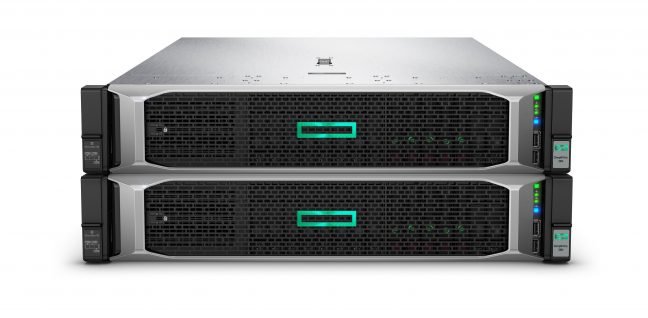
Nodes
Due to the technology of the Omnistack accelerator card and the savings it provides, it is possible to place only one node at specific locations. In this way, you can easily reduce costs. For example, a retail chain can place several nodes at the head office and only one in each branch. As soon as it breaks down, someone will have to go and replace or repair it, but that might be cheaper than placing two nodes everywhere. This is also dependent on what’s going to be installed. The nodes can be configured in such a way that no data is lost because all transactions are directly shared with multiple nodes. This can, again, take place at the head office or at another branch.
Clusters
All nodes that are reasonably close together with reliable connections can, in principle, form one cluster. As soon as latency becomes an issue, for example in the case of database servers, the situation must be carefully assessed. For example, it’s not a good idea to create a single cluster with nodes in the US and Europe. In that case, it would be wiser to create two clusters that are linked together. They still synchronise the data, but the SQL server works much faster because it can communicate with the nearest cluster. After that, the HPE SimpliVity solution still synchronizes data. In one cluster, all nodes run on equal speeds. In the case of two clusters, there will be a few seconds of difference.
When is an HCI or, in this case, HPE SimpliVity interesting for a company?
Whether your company’s current IT environment is suitable to be replaced by HPE SimpliVity, or if another HCI would better, is difficult to assess. The price tag of an HCI is generally seen as fairly high, but if the company in question needs a lot of compute or data and wants to be able to operate very quickly, then an HCI becomes interesting. There are also customers who can save costs with an HCI.
For example, one company went from 6 data centres and 34 racks to 3 data centres and a total of 1.5 racks, because the company had a vast amount of data that could be significantly reduced thanks to the SimpliVity technology. This ultimately resulted in a cost reduction of 100 million dollars. There are now also several Formula 1 teams that have switched to SimpliVity. Not because HPE sponsors those teams, but because in the Formula 1 world, like weight, and how many servers they have to carry, are important. In addition, all kinds of individual components are much more susceptible to interference. With SimpliVity, all they have to do is connect and start up a few nodes. Within an hour, everything is synchronized, and they have their processes running. This has undoubtedly simplified IT-management.
All in all, HPE has an interesting proposition with SimpliVity, and the company is becoming an increasingly significant player on the hyper-converged market, alongside parties like Nutanix and VMware. However, we do note that there are also some differences between these players. This means that which solution is most interesting is dependent on a company’s environment.
It was recently announced that Nutanix, like many other companies, will become HPE’s OEM partner. This means that Nutanix can now supply HPE servers with the Nutanix software installed. This is a separate development from HPE as an HPE SimpliVity supplier. Nutanix focuses more on compute and cloud management. As discussed above, HPE SimpliVity is more of a data management platform. For cloud management, HPE works closely together with VMware and Microsoft.
Although HCI solutions have already brought a lot of simplicity and innovation, the end is not yet in sight. We expect to see many more HCI innovations in upcoming years. The platforms are becoming more and more software-defined. This will open up multi-cloud possibilities, with which clusters can run on multiple clouds. We are not yet at that point, but it’s definitely coming.
